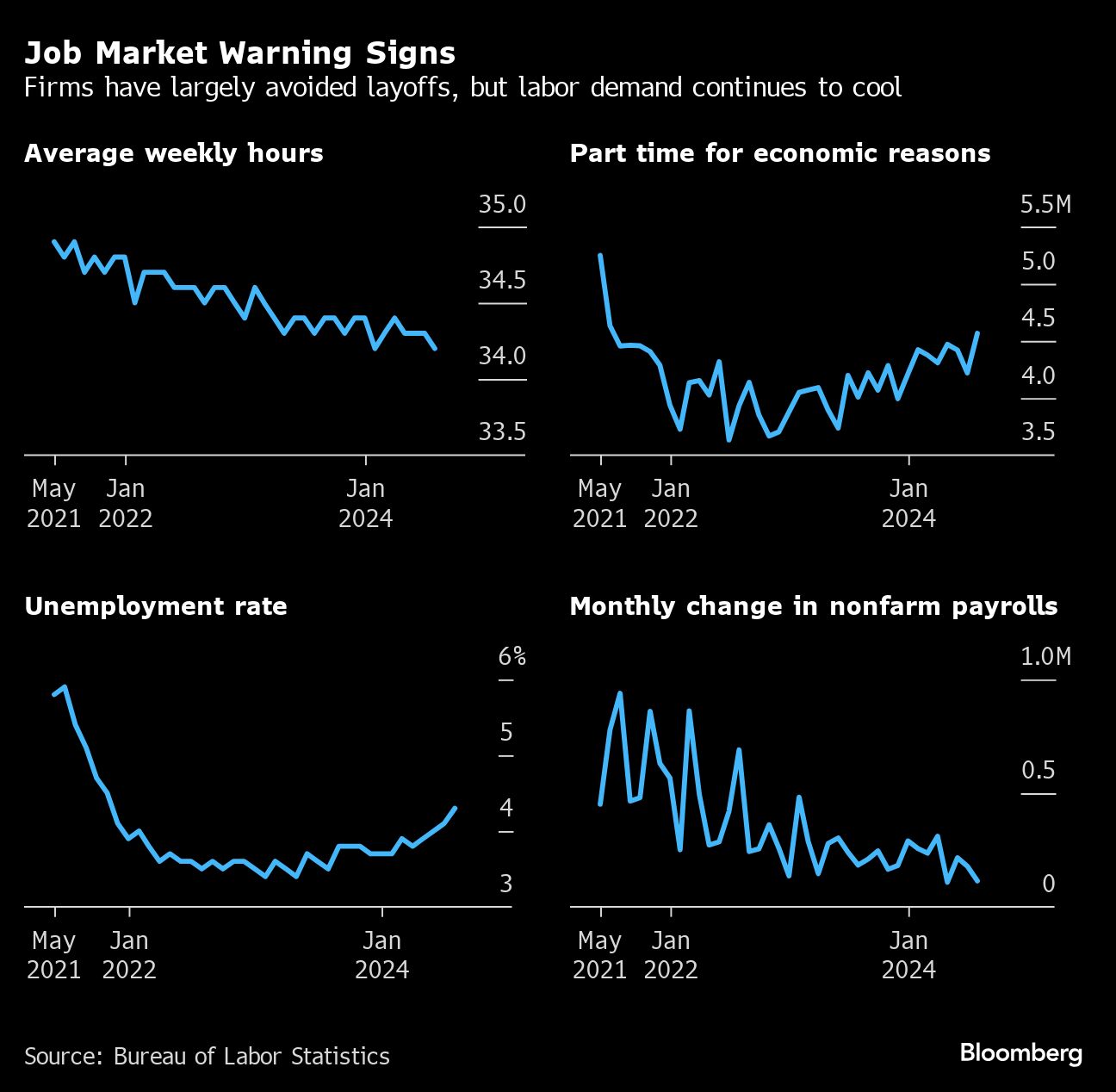
(Aug 8): The US Federal Reserve’s (Fed) ability to avert a downturn rests in part on just how long a post-pandemic irregularity can continue: labour hoarding.
Even with interest rates at the highest level in more than two decades and signs of a cooling economy, businesses scarred by pandemic-era worker shortages have largely avoided lay-offs. Instead, they have pulled back hiring, trimmed job openings and reduced hours.
But recent data is stoking fears employers may soon near the end of their rope — and pick up the pace of job cuts.
The labour market is “at the tail end of this sort of slowing that was probably in train because the economy was normalising from the [Covid-19] pandemic”, said Skanda Amarnath, an executive director of Employ America. “If you let this situation continue to trend in the way it is, things run a high risk of breaking.”
The delicate state of the jobs market is not lost on Fed officials, who have increasingly shifted their focus to avoiding a surge in unemployment. While they have long wanted to cool down an overheated labour market, officials are wary of it softening too much, especially with inflation now much closer to their 2% goal.
The labour market remains solid, policymakers say, but chair Jerome Powell also said last week the downside risks to employment are “real now”.
The latest jobs report, which showed a material slowdown in hiring and an unexpected pickup in joblessness, heightened these concerns. The unemployment rate climbed for a fourth straight month, hitting an almost three-year high of 4.3% and triggering a closely watched recession indicator.
Under the surface, the number of Americans working part-time for economic reasons, like unfavourable business conditions, jumped to a three-year high. Wage growth slowed and average weekly hours declined, matching the lowest level since the onset of the pandemic.
“Employers have an intermediate lever they can pull, which is hours worked,” said Richard Moody, the chief economist of Regions Financial Corp, adding that many firms remain hesitant to implement lay-offs for now. “If they start to feel that things are slowing down and they are going to stay slowed down, at some point they are going to start letting workers go.”
Officials are widely expected to lower borrowing costs at their next gathering in September, but some argue policymakers should have already stepped in to support the jobs market. Investors, and some economists, now see the central bank starting cuts with a jumbo half-point reduction following the July employment figures.
Some Fed officials urged investors not to read too much into any one report, especially one that may be muddied by severe weather and a jump in temporary lay-offs. Still, investors and economists worry the distance between today’s jobs market — where many Americans are employed and more continue to enter the workforce — and a significant deterioration is razor-thin.
“People aren’t hiring, but people aren’t firing, okay, and that’s not normal,” Thomas Barkin, the president of the Richmond Fed, said following last Friday’s jobs report. “The question you have to ask is, ‘How long does a low-hiring, low-firing environment persist?’”
Pandemic impact
As the economy emerged from the pandemic, US employers struggled to hire enough workers to keep up with consumers eager to resume spending after lockdowns. In March 2022, there were two job openings for every unemployed worker. Employers offered hefty pay raises and other incentives to lure workers, putting upward pressure on prices.
But when the Fed lifted rates aggressively in 2022 and 2023 to combat price growth, triggering some cooling in the economy, employers didn’t respond like expected. Job openings slowly declined, but with few lay-offs, joblessness remained low. Now, with roughly one vacancy per unemployed worker, in line with 2019 levels, officials have warned weaker demand may generate higher unemployment.
“The old normal relationships are likely to start happening,” Fed governor Christopher Waller said in May. “It’s not like we can continue from here on counting on vacancies absorbing any further decreases. We are getting to that point where the traditional relationships are going to start popping out.”
Initial filings for jobless benefits, a proxy for lay-offs, have ticked higher, reaching their highest level in nearly a year at the end of July. And a few companies, like Intel Corp, have announced job cuts. But overall, companies remain reticent to let go of workers.
“Firms are either keeping their workforces stable, or they are letting them slow through attrition,” San Francisco Fed president Mary Daly said on Monday. Next, “they say we need to shrink the size of our payrolls, but we haven’t really been seeing that in large scale yet”.
Uploaded by Tham Yek Lee



